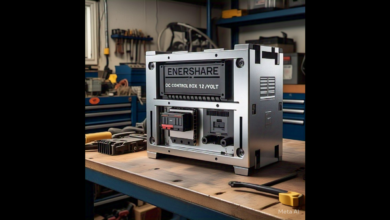The Fastest Jet: Unveiling the Speed of the World’s Most Powerful Aircraft

The fastest jet in the world is a true marvel of modern engineering. With incredible speeds that seem almost impossible, these jets can reach astonishing altitudes and travel faster than the speed of sound. In this blog post, we will take a closer look at the fastest jet ever created, how it achieves such remarkable speeds, and the technology behind it.
When it comes to the fastest jet, speed is not the only factor. The design, materials used, and the powerful engines all play a crucial role in reaching mind-blowing speeds. Join us as we explore the fastest jets in the world and uncover the secrets behind their record-breaking performances.
What Makes the Fastest Jet in the World So Special
The fastest jet in the world is no ordinary aircraft. What sets these planes apart is their incredible speed, cutting-edge design, and unmatched engineering. The combination of powerful engines, aerodynamic shape, and advanced materials allows these jets to fly faster than any other man-made machine. These jets are built to cut through the air with minimal resistance, making them incredibly fast.
One of the main features that make the fastest jet stand out is its propulsion system. These jets use advanced engines capable of producing extreme amounts of thrust. This allows them to break speed records and travel faster than the speed of sound. Additionally, the sleek, sharp designs of these jets help reduce drag, which is the force that slows an aircraft down.
In addition to speed, these jets are also designed for extreme agility. This means they can not only go fast but also change directions quickly and maneuver through tough conditions. The combination of speed and maneuverability makes the fastest jets a key asset in military and aerospace industries.
The Fastest Jet Ever Built: A Glimpse Into Aviation History
Throughout aviation history, humans have been trying to build faster and more efficient jets. The fastest jet ever built is a part of that ongoing pursuit. The title of the fastest jet currently belongs to the North American X-15, which reached speeds of over 4,500 miles per hour, more than six times the speed of sound! This historic aircraft was a test plane that helped pave the way for modern jet designs.
The X-15 was built in the 1950s as a part of a NASA program to study high-speed flight. Though it was not a jet in the traditional sense, it set speed records that remain unbeaten today. It was powered by powerful rocket engines, which enabled it to reach unimaginable speeds. The X-15 also helped scientists learn valuable lessons about high-speed flight, which influenced future designs of supersonic aircraft.
In modern times, jets like the SR-71 Blackbird have also held the record for the fastest jet for many years. This spy plane could fly at over 2,200 miles per hour, which is about three times the speed of sound. It’s clear that building the fastest jet requires a blend of innovation, creativity, and years of research.
How the Fastest Jet Achieves Supersonic Speeds

The reason the fastest jet can achieve supersonic speeds lies in its engine technology. Most of these jets use powerful jet engines that create a forceful blast of air, allowing the plane to move forward at incredible speeds. These engines often feature afterburners, which boost the jet’s speed by increasing the efficiency of fuel combustion.
Another key factor in achieving these high speeds is the aircraft’s shape. Jets that break speed records are designed with smooth, pointed noses and sleek bodies that reduce air resistance. The less air resistance the jet faces, the faster it can fly. Engineers pay close attention to every curve and angle to make sure the jet can slice through the air with ease.
Materials also play a big role in making these jets fast. Lightweight materials, such as titanium and carbon fiber, help keep the weight of the jet low. This is important because a lighter jet can accelerate more quickly and reach higher speeds. The combination of powerful engines, efficient designs, and lightweight materials is what allows the fastest jets to achieve supersonic speeds.
Exploring the Technology Behind the Fastest Jet
The technology behind the fastest jet is constantly evolving. Engineers are always looking for new ways to make jets go faster, while still keeping them safe and efficient. The engines used in these jets are extremely powerful and require special cooling systems to prevent overheating. Without these systems, the engines would not be able to handle the extreme conditions of high-speed flight.
Jets that reach incredible speeds also rely on advanced radar and navigation systems to ensure they stay on course. These systems allow pilots to control the jet’s flight path, even when traveling at speeds that make traditional instruments hard to read. This technology is crucial for maintaining control during high-speed missions.
Furthermore, advances in materials science have allowed for stronger, lighter, and more heat-resistant materials to be used in the construction of these jets. For example, the engines of the fastest jets are built using special alloys that can withstand extreme temperatures. Without these innovations in technology, it would be impossible to reach the speeds we see in the fastest jet.
Top 5 Fastest Jets in the World Today
When it comes to the fastest jet, several aircraft deserve attention. Below is a list of the top 5 fastest jets currently in existence.
- North American X-15 – The record holder for the fastest jet with speeds reaching over 4,500 miles per hour.
- Lockheed SR-71 Blackbird – This jet can reach speeds of over 2,200 miles per hour, making it one of the fastest jets in operation.
- MiG-25 Foxbat – A Soviet-era jet capable of reaching speeds close to 2,200 miles per hour.
- Lockheed Martin F-22 Raptor – Known for both its speed and stealth capabilities, this jet can fly at over 1,500 miles per hour.
- Boeing X-43 – An experimental aircraft that reached speeds of over 9,000 miles per hour, though it was not a traditional jet.
Subheading: What Makes These Jets So Fast?
- Powerful Engines – Each of these jets is powered by engines that can produce massive amounts of thrust.
- Sleek Designs – Their aerodynamic shapes help them cut through the air with minimal drag.
- Advanced Materials – Lightweight materials help reduce weight and improve performance.
The Future of Speed: How Jets Are Getting Faster

Looking ahead, the race to build even faster jets is far from over. Engineers and scientists are continually developing new technologies that could take the fastest jet even further. One such development is the use of scramjet engines, which could enable aircraft to fly at speeds of Mach 10 or more. Scramjets work by compressing air at high speeds, which helps the jet to move even faster without using traditional jet engines.
Another exciting possibility is the use of hybrid propulsion systems. These systems could combine the best features of jet engines and rocket engines to achieve higher speeds while maintaining efficiency. As technology advances, it’s likely that we’ll see new jets that are not only faster but also more efficient, safe, and capable of traveling longer distances.
With innovations in materials, design, and propulsion technology, the future of speed in aviation looks bright. The fastest jet might just be around the corner, pushing the boundaries of what we thought was possible in the sky.
Conclusion
The fastest jet is a true masterpiece of engineering and design. These jets can reach speeds that are almost unbelievable, thanks to their powerful engines, lightweight materials, and sleek shapes. With advancements in technology, we continue to push the limits of speed in the skies. The fastest jets of today are not just tools of speed; they represent the future of aviation.
As technology improves, we can only imagine how fast jets will be in the coming years. Whether it’s through new propulsion systems or stronger materials, the quest for speed will continue. The fastest jet is a reminder of what human innovation can achieve, and it’s exciting to think about what the future holds for air travel and aerospace technology.
FAQs
Q: What is the fastest jet in the world?
A: The fastest jet ever built is the North American X-15, which reached speeds of over 4,500 miles per hour.
Q: Can commercial jets go as fast as military jets?
A: No, commercial jets are much slower. They usually fly at speeds around 500 to 600 miles per hour, while military jets can reach speeds over 1,500 miles per hour.
Q: Why are some jets so fast?
A: Jets are fast because they have powerful engines, sleek designs, and lightweight materials that help them move through the air with less resistance.



